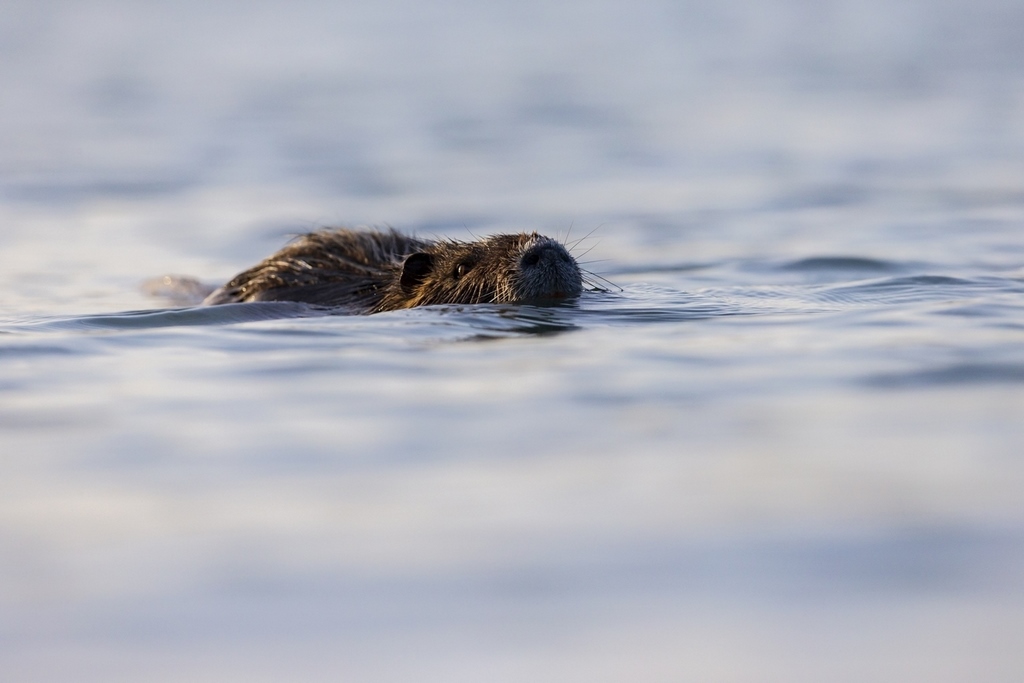Le Ragondin
Myocastor coypus
Eh oui, le Ragondin n’est pas de chez nous !
Il a été introduit en Europe au début du XIXe siècle pour sa fourrure. Certains individus évadés des fermes, ou relâchés volontairement, colonisent rapidement la majorité du territoire français. Dans les années 1980, elle envahit le Marais poitevin et la lutte contre sa prolifération devient obligatoire.
Aujourd’hui l’animal est classé comme nuisible en raison des dégâts importants qu’il provoque. Il endommage les berges en creusant son terrier et la réparation des dégâts causés nécessite de lourds travaux. Des pièges-cages sont donc utilisés pour le capturer et réguler sa population.
Morphologiquement, le Ragondin est un gros rongeur d’apparence semblable au rat musqué, reconnaissable à ses quatre grandes incisives orange. Il pèse en moyenne 7kg et son pelage est brun, son corps est terminé par une longue queue semblable à celle du rat.
Il mène une vie plutôt crépusculaire ou nocturne mais peut néanmoins avoir une activité diurne soutenue. Il aime l’eau douce et creuse des terriers de 6 à 7 mètres le long des berges des rivières, des canaux ou des marais.
Dans les pays où il a été introduit, comme la France, le ragondin n’a pas de prédateurs naturels, du moins à l’état adulte. Les jeunes ragondins sont parfois la proie de prédateurs comme les belettes. En raison de son caractère envahissant, le ragondin est une espèce inscrite sur la liste des espèces exotiques envahissantes préoccupantes pour l’Union européenne, conformément au règlement européen n° 1143/2014.
Outre sa chasse comme ravageur, le ragondin peut être chassé ou élevé pour sa peau et sa viande, sous réserve de détenir le certificat de compétence correspondant au même titre que, par exemple, un élevage de cerfs ou de sangliers.
